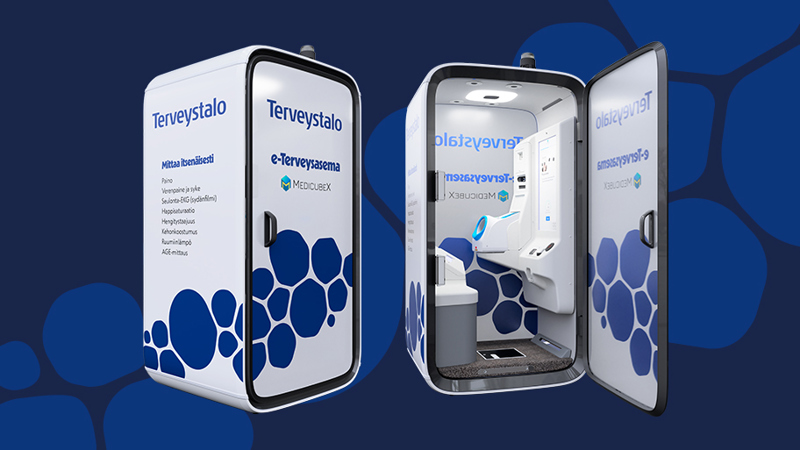What should employers take into account regarding the 1.6.2023 upcoming updates to the Occupational Safety and Health Act?
With the update of the Occupational Safety and Health Act, workplaces will have to assess workload factors more systematically from the beginning of June. The update clarifies the employer's duty of care by specifying which types of psychosocial work stress factors the employer must take into account. In order to make working life more sustainable, the update pays particular attention to psychosocial stress factors that are a risk factor for work-related fatigue, such as job content, work organisation and the social functioning of the work community. The law also takes a stand on employers' obligations to take measures to promote longer careers and better job satisfaction.

Change in working life is not a new phenomenon, as work has always changed. In recent years, the Covid-19 pandemic accelerated the transformation of work and naturally, as work changes, so do the workload and individual resources. Employers are already obliged by the Occupational Safety and Health Act to prevent work-related stress, but traditionally stress has been considered in terms of the hazards of the physical working environment.
– Physically overloading work has increasingly been accompanied by physically underloading work. In addition, the employer must also identify psychosocial stress factors such as excessive information, constant interruptions, difficult customer situations, excessive workloads and dysfunctional work communities. In addition to identifying the stress factors, the employer must take the necessary measures to prevent the stress from leading, for example, to work-related fatigue. However, you don't have to know everything yourself, we at occupational health care are there to support your workplace, says Ilse Rauhaniemi, senior occupational health physician at Terveystalo.
Work fatigue is not a disease in itself, but a bundle of work-related symptoms.
– In the workplace, work fatigue often manifests itself as cynicism and a loss of professional self-esteem, as well as challenges in managing one's emotions or learning new things. A person who is exhausted at work may spend all their free time recovering from work, and they may not have time to see their friends or do things that are important to them, says Rauhaniemi.
The latest 'How Finland is doing' survey by the Finnish Institute of Occupational Health revealed that one in four people under the age of 36 suffer from work fatigue or have an increased risk of work fatigue. Among 46-55 year-olds, the figures for work fatigue were at the same level as for young adults.
– In 2022, rising levels of mental health-related absenteeism and the public health threat of work-related exhaustion prompted the occupational health and safety departments of regional state agencies to carry out more than 3,000 inspections specifically targeting the management of psychosocial stress in the workplace. As many as two thirds of the workplaces inspected had to be corrected in the management of psychosocial workloads.
Harmonisation and lengthening of careers is the aim of the law amendment
To overcome the economic sustainability gap caused by a shrinking working age population, we as a society must succeed in harmonising and extending working lives and careers. This requires employers to take a stronger approach to managing work risks and stress factors and to adapting work to the individual characteristics of the employee.
– Employers must take into account the variability of workability in different stages of a person's career. It is not just about extending careers, but also about getting off to a good start, as we are already seeing a growing trend in mental health challenges among young adults. Preventive measures and early interventions are proven to be the most effective, so their importance is now also growing in the update of the law on occupational safety, says Rauhaniemi.
The action plan, based on the workplace survey, takes into account the stress factors in the workplace
To enable employers to design the most effective and correctly targeted measures to reduce work-related stress, information is needed on work stress factors and their health significance. The workplace carries out a work risk assessment and a workplace survey is planned and carried out in cooperation with occupational health. The workplace survey assesses the health significance of the stress factors and recommends the necessary measures to reduce them.
– The occupational health multidisciplinary team each has an important role to play in carrying out the workplace survey. The assessment of health significance and work capacity effects is primarily the responsibility of the occupational physician, but occupational health nurses and occupational physiotherapists, as occupational health professionals, can carry out the basic physical examination independently, with the physician participating in the planning of the workplace examination and, if necessary, in the visit itself remotely, says Rauhaniemi.
The occupational physiotherapist primarily assesses the physical stress factors of the job. The expertise of an occupational psychologist is important in planning the basic job survey and assessing the health impact of psychosocial stress.
– Depending on the workplace situation and load factors, targeted workplace assessments can also be carried out independently by occupational health experts, such as an occupational health psychologist or a nutritionist, for example, Rauhaniemi continues.
Today and in the future, work will increasingly be done in a hybrid model and with ever-changing group of colleagues. In addition, work is often done outside the workplace, at home and in places that are not primarily designed for work and where someone other than the employer is responsible for health and safety. In order to support workability, it is therefore important for occupational health to have a holistic view of the work of employees.
– An occupational health action plan, based on the baseline survey, describes the occupational health cooperation required by the employer as a business customer. The action plan is drawn up in cooperation with the workplace and describes, for example, health checks that take into account the specific characteristics of different sectors and working patterns. In this way, we can prevent work-related illnesses and support the employees ability to work, Rauhaniemi adds.
More occupational health articles

Nicotine satches and e-cigarettes already pose a threat to oral health
Nicotine sachets use is increasing, especially among working-age men and women. Among young people, e-cigarette smoking has even tripled in five years. It is already known that nicotine sachets and e-cigarettes cause similar changes in the mouth as traditional smoking. Ritva Lindblad, senior dentist at Terveystalo, warns that we are only now beginning to see the first signs of the products' effects on oral health.

Terveystalo strengthens disease prevention in collaboration with Finnish health technology company MedicubeX
Terveystalo and the Finnish health technology company MedicubeX have entered into a strategic partnership that will make Terveystalo the only private healthcare provider in Finland to have access to MedicubeX's self-monitoring stations (e-Health Stations™). The aim of the partnership is to support the health of the Finnish population and prevent lifestyle diseases.

A mind-friendly and brain-healthy holiday - how to recover and recharge your batteries?
Many people start their summer holidays after Midsummer. For a holiday to soothe your mind, take a look at Terveystalo's occupational health psychologist Tiina Tuominen's tips for a restorative holiday.

What future leadership looks like?
According to Hertta Vuorenmaa, an expert on the future of work and management, work is a huge social institution, and changing it is always difficult because we have established ideas about how to do work. Understanding historical turning points can help in managing current changes, as changes in working life are not only technology-driven, but require holistic thinking and managing people's emotions.

The approaching holiday feels stressful – What can help?
The holiday is approaching, but work issues are piling up and there’s conflict in the family about how to spend the time off. Excessive expectations and the pressure to “make the most of it” can cause unnecessary anxiety.

"Let life show at work"
Humanity in the workplace feeds well-being and productivity. Workplaces need a new culture that genuinely values diversity and takes into account different life situations," says Eveliina Holmgren, an organisational psychologist at Terveystalo.